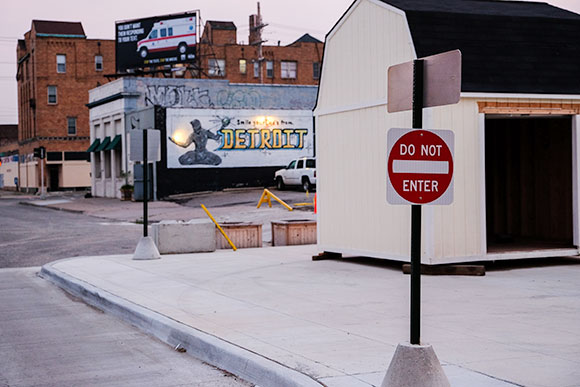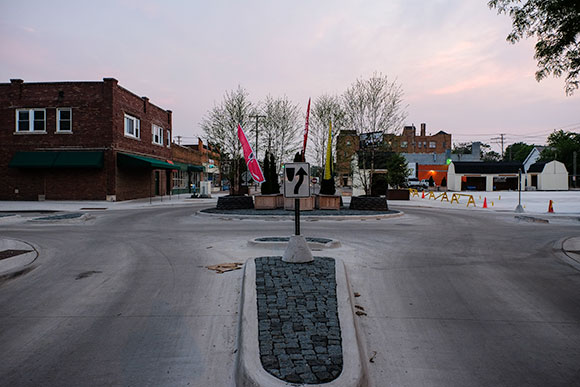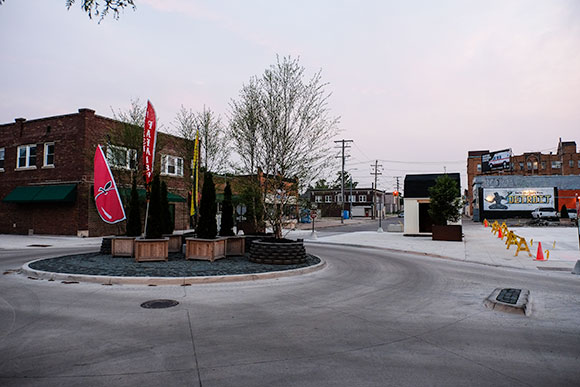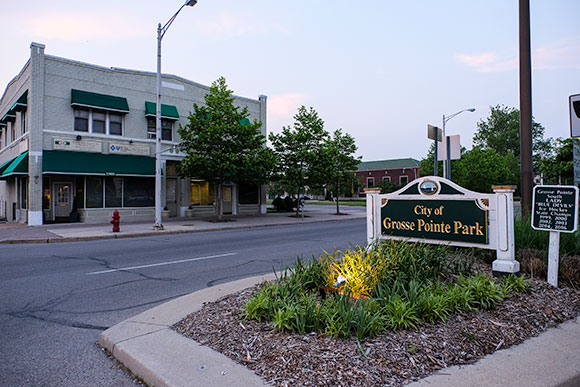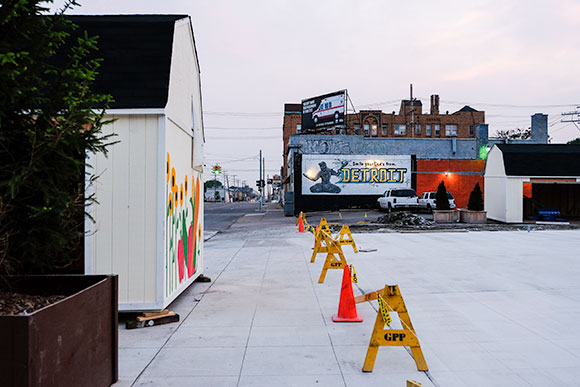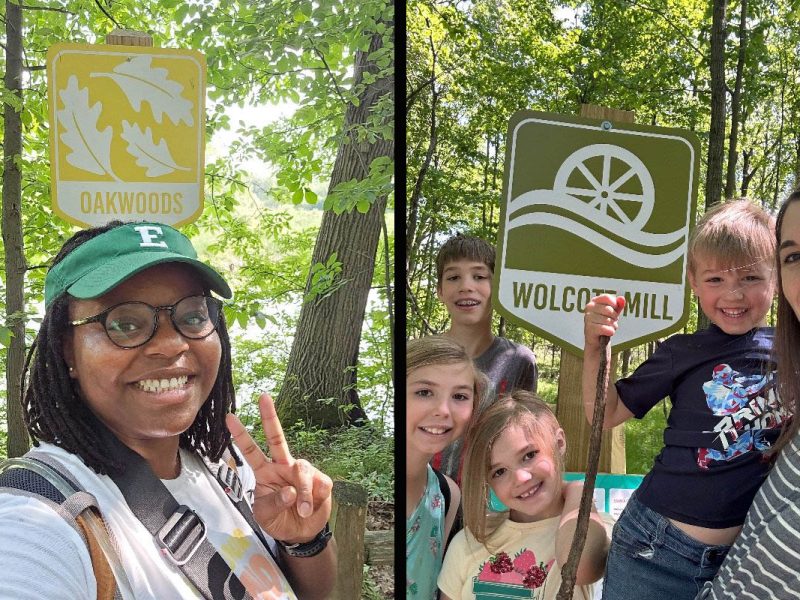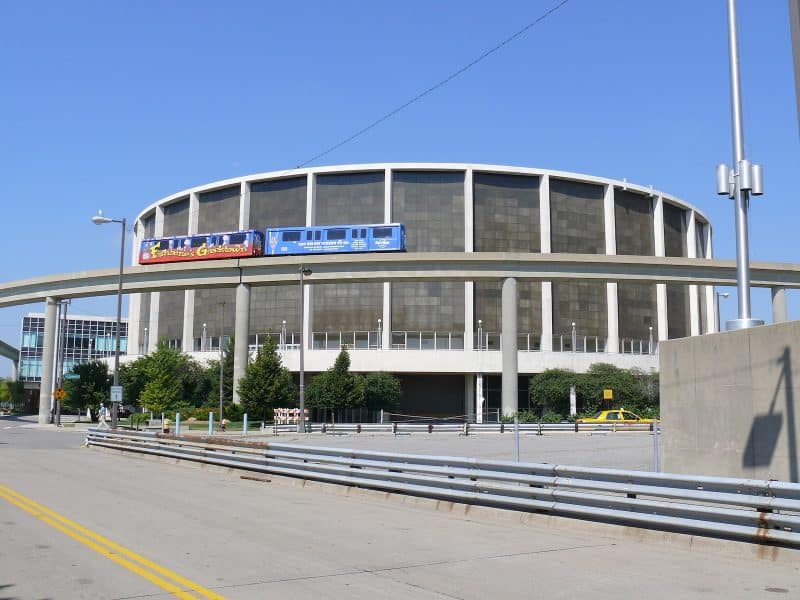Examining the borders that define metro Detroit
As the city of Detroit recovers from bankruptcy, county power dynamics shift, and regional issues like water, sewer, transit, education and energy come to the fore, the borders that circumscribe metropolitan Detroit will impact an array of important issues affecting us all.
In metropolitan Detroit, we live in three counties containing 132 municipalities and 97 school districts. We are represented by eight districts in the U.S. House of Representatives, 17 State Senate districts, and 45 State House districts. The natural landscape upon which our region is built drains water to five river systems and is composed of six unique types of glacial landforms.
We are a region of borders.
These borders define our communities. They offer us protection and identity. They demarcate the lines within which we live, work, raise families, and socialize.
Some of these borders are famous, earning us national press. Think 8 Mile Road, or the border between Grosse Pointe and Detroit. Others affect us in more subtle ways. Buy a house down the block, and you may be in a different city or neighborhood. Your kids may be in a different school district.
We judge each other based on where we’re from or where we live. Do you live in the city? The suburbs? The exurbs? Are you “from here”? Are you willing or able to cross a border to break bread or imbibe a beer with friends who live somewhere else? Does what happens in another county, municipality, school district, congressional or state legislative district impact your life?
As the city of Detroit recovers from bankruptcy, county power dynamics shift and regional issues like water, sewer, transit, education and energy come to the forefront, the borders that circumscribe metropolitan Detroit will impact an array of important issues affecting us all.
That’s why Metromode and Model D are launching a new series: Life on The Border. In the coming months, we will examine who we are and where we are going through the lens of the lines we cross–or don’t–in our daily lives.
This map shows the natural borders: the watersheds and glacial landforms in Wayne, Oakland .and Macomb counties.
Just how fragmented is metro Detroit?
According to a recently published University of Illinois study, metro Detroit ranked number 19 out of 51 metropolitan areas (those with a population of 1 million or greater) on a scale of local government fragmentation. (Chicago topped this list, and Charlotte, North Carolina ranked lowest). The measure takes into account an array of six factors that measure the degree of local government fragmentation: total number of local governments, size of the region, different types of local government, percent of population not in the central city and percent of governments that serve a special purpose.
The study also looked at “fiscal responsibility dispersion”, or the degree to which spending for local services is concentrated or dispersed across local governments. On this measure, Detroit ranked 12 of 51, putting it in the top quartile for spreading fiscal responsibility across the region. We have a few regional millages and authorities, but most of our spending on local services takes place locally.
As for socioeconomic fragmentation, the study looked at 2000 census data to arrive at a measure of population sorting, or how much we segregate ourselves by race, ethnicity, income, poverty, and education. On this scale, metro Detroit ranked 27 out of 51 — about in the middle. We aren’t the most socioeconomically integrated place in the nation. But neither are we the least; we have several socioeconomically diverse suburbs and cities.
This map shows the local governments and school districts in Wayne, Oakland and Macomb counties.
The Cost of Borders
Studies have demonstrated that local government fragmentation correlates with increased costs, social segregation, and urban sprawl. The argument is that local governments compete with one another for limited resources, residents, and businesses, while duplicating services that could be more efficiently delivered on a larger scale.
In 2011, Michigan Gov. Rick Snyder began a campaign to encourage local governments to work together, tying local government service consolidation to state revenue sharing.
While local governments largely complied with the new requirements to document their collaborations, the hoped-for local service and government consolidations did not materialize. In 2014, local service consolidation was entirely decoupled from state revenue-sharing. People wanted to keep their local governments and services.
“We’re a strong home-rule community,” says Carmine Palombo, deputy executive director of the Southeast Regional Council of Governments. “The history of this area is that communities have a lot of authority and a lot of autonomy.”
Palombo points to the failed attempt at a merger between Farmington and Farmington Hills as an example. The two cities began talking about merging even before the financial crisis hit in 2008, commissioning a study, paid for by Oakland County, that detailed significant potential cost savings and benefits.
The merger never took place.
“It was the citizens of both communities that were opposed to that,” says Palombo. “It was the city of Farmington thinking that Farmington Hills only wanted them for their downtown and vice versa. So there’s a strong sense of place.”
Palombo remembers that when local governments in the region were first incorporating, some of the earliest arguments were about post offices.
“Some of largest oppositions that we had were discussions about the locations of post offices and whether or not a community was going to lose their post office or have to share it with another community,” he recalls. “Many citizens didn’t want their community changed to a different name. We have a strong sense of place in this region; it just always seems to have been this way.”
But sometimes that sense of place gets in the way of efficiency.
“One of the biggest issues is funding public safety,” says Bob Kittle, mayor Pro-tem of Auburn Hills and president of Munetrix, an Auburn Hills-based data analytics firm for municipal governments. “Many municipalities across the state are struggling with funding their police and fire departments, and struggle to find efficiencies. In a situation where there’s a fire and it would be faster for an apparatus from a neighboring community to get to it, why is there a reluctance to do that?”
Kittle points to Great Lakes Crossing mall as an example.
“Auburn Hills has an unmanned fire station about a quarter mile from the mall, but when a call goes out, a station about 4 miles away has to respond,” he says. “Is it possible Orion Township’s fire department could get there faster?”
Today, border squabbles large and small continue across the region.
In 2014, Grosse Pointe Park made headlines for placing a shed in the middle of Kercheval, effectively shutting down a thoroughfare linking the city with Detroit. The shed was eventually removed.
And in 2015, the Rochester City Council made headlines by objecting to the placement of a banner by their neighbors, Rochester Hills, proclaiming its award as a “Top 10 City” by Money Magazine, in the jointly funded library. Rochester officials objected to the display of the Rochester Hills’ mayor’s name in an election year.
But while borders seem to provide fertile ground for political theater, they may also provide a way to connect communities.
This map shows the congressional and state political districts in Wayne, Oakland and Macomb counties.
Turning borders into gateways
“Consolidation isn’t the answer,” says Conan Smith, Executive Director of Metro Matters (formerly the Michigan Suburbs Alliance). “Those places that have unified their city-county government aren’t achieving any better. So this in-between space where there’s intense cooperation and collaboration seems to be the thing that pushes people to achieve in those places where you have intense fragmentation.”
Smith would like to see communities find ways to soften their borders and transform hard boundaries into community connectors and gateways.
“The reality of people’s experience is that they don’t live within the small confines of a single community or a single school district or a PTA,” he says. “They’re moving. They’re working. They’re playing. They’re spreading commerce and culture across those borders everyday, all the time. We need to really, I think, spend some time re-conceptualizing what those borders mean and the purposes and functions that they serve.”
The border dispute between Grosse Pointe and Detroit is potentially transforming into such a gateway, with a plan for a multi-use development accessible from both sides of the city line. Smith sees the potential for that concept to be applied elsewhere across the region.
“Look at the bridge at Woodward and 8 Mile — there’s a tremendous and iconic border issue that has existed for generations,” says Smith. “We should definitely be talking about what does that mean, this divide between our communities? Especially something as symbolic as a bridge that actually doesn’t bridge — a bridge that divides.”
Getting past our borders and to the right kind of collaboration is going to be a tricky thing for a region that has been so fragmented for so long. But progress has already been made.
“I think it’s been interesting to watch the Big Four (the executives of Wayne, Oakland, and Macomb counties and the mayor of Detroit) come together around important issues in the last decade,” says Smith. “To me, that is a signal that we’re starting to act and think like a region. Now we have a millage for the zoo and a millage for the DIA. We have the COBO Authority and the RTA (Regional Transit Authority). I think the odds are pretty good that, in a few weeks, we’re going to have a Great Lakes Water Authority that’s official.”
The balance between local identity and regional collaboration will be one that metro Detroit will have to strike in its own unique way.
“Does it make sense to have so many small communities, especially today with costs being what they are?” asks Palombo. “I think you could make an argument, just from a dollars and cents point of view, that in some instances it would make more sense for communities to at least share services if not combine into one new community. But at the same time, the strong sense of place that we have as a region speaks to how important this area and individual community is to a person. There’s a lot of evidence that suggests that for a lot of people, there’s more to it than just dollars and cents.”
—
Nina Ignaczak is a metro Detroit-based freelance writer. Follow her on Twitter @ninaignaczak.
Photos by David Lewinski Photography.
